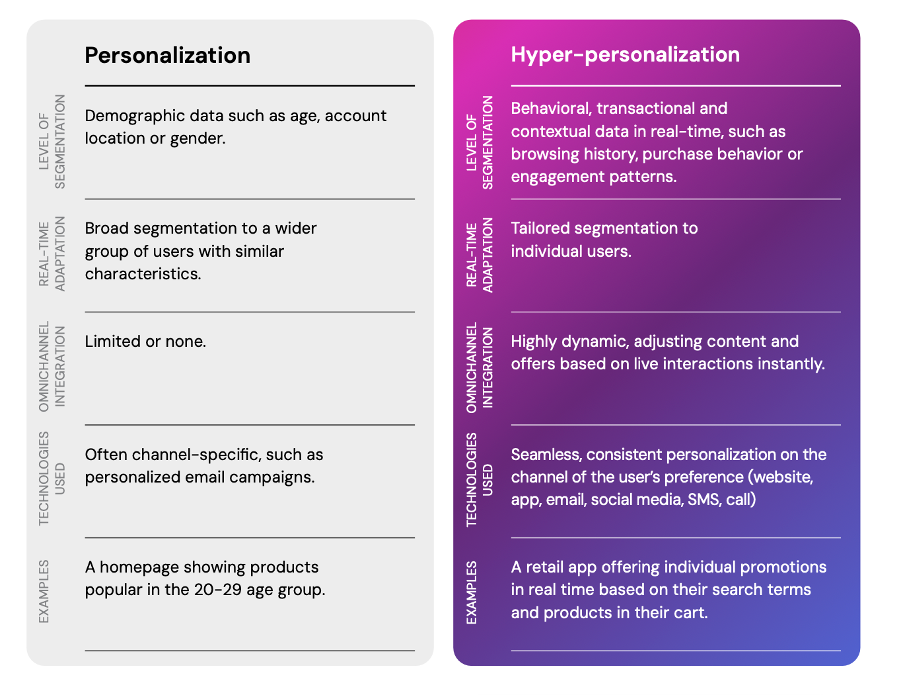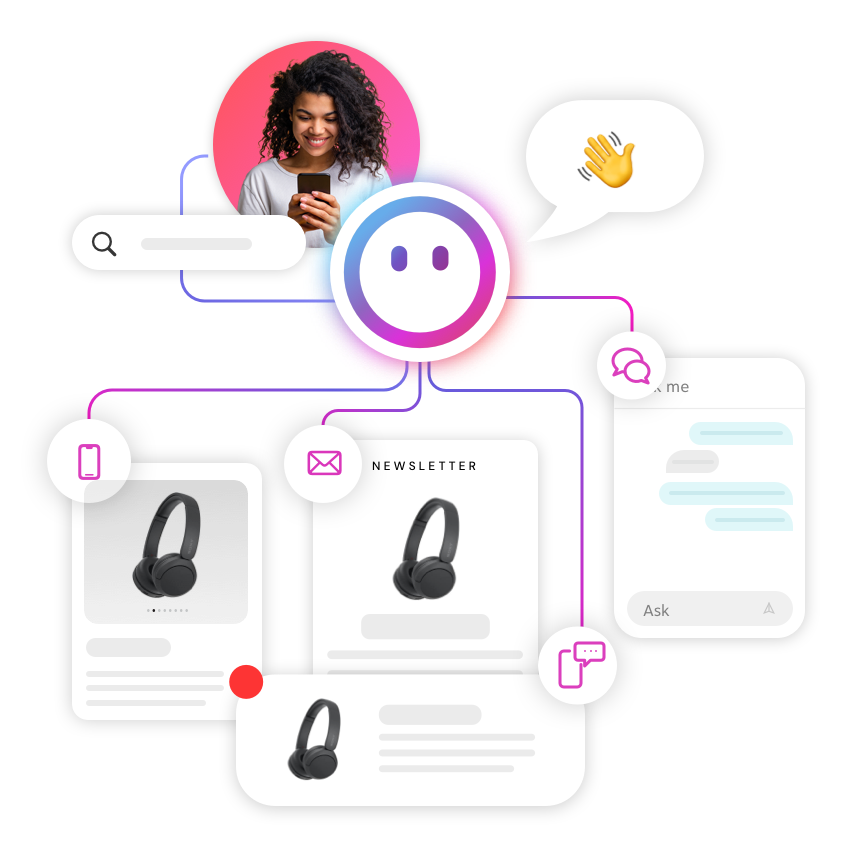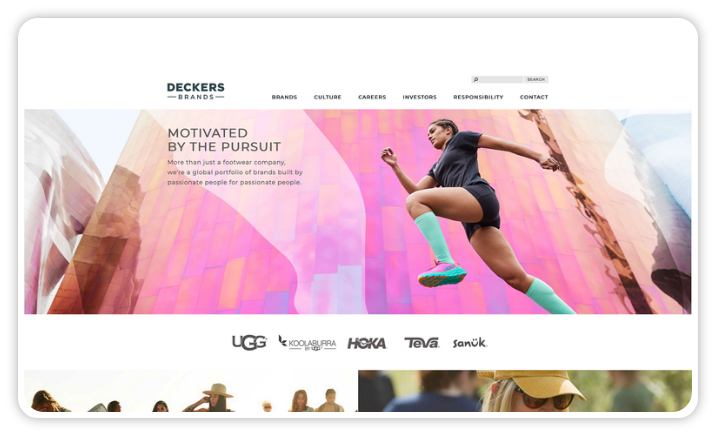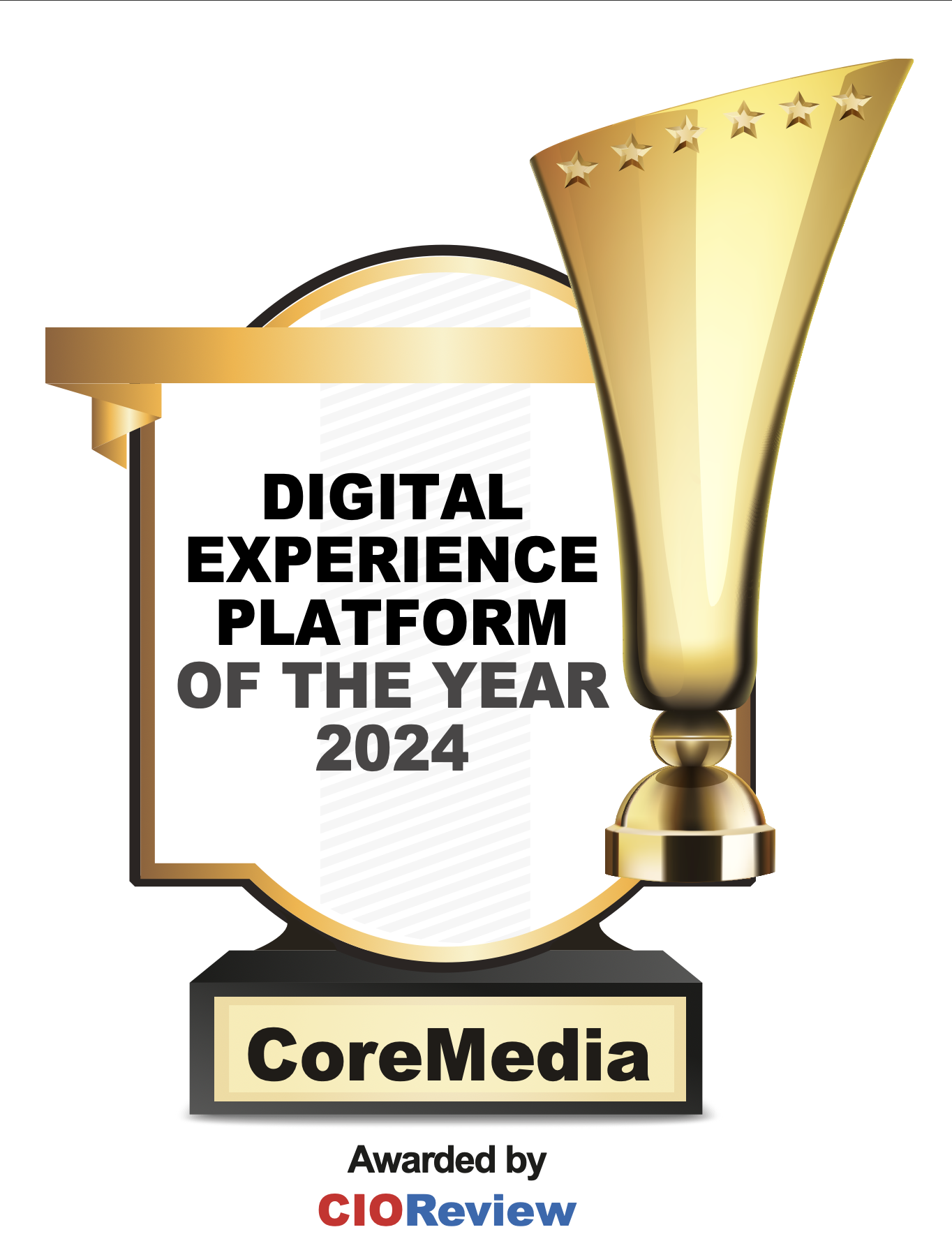Compare that to getting an email with your name and a discount code for a product you just bought last week. Not only is it useless, but it also makes you wonder if the brand is paying attention at all. So, what is happening? Personalization used to be impressive, but now most of it still falls short.
Let’s walk through how personalization has changed, what customers really expect and what it takes to meet those expectations without sounding like a robot.
When personalization was just using someone’s name
Back then, personalization meant using demographic info in email campaigns. A name, a birthday and maybe a purchase history if you went beyond. You’d split your audience into groups, like “women aged 25 to 34” and tailor the messaging accordingly.
For its time, it worked. But things have changed and the bar has been raised. Today, we scroll through AI-powered recommendations on TikTok, binge-watch hyper-curated Netflix shows and shop on Amazon, where suggestions are often perfect.
Why there’s still a gap between what brands deliver and what people feel
Business leaders love to say they’re doing personalization. 89% of them say so, but only 60% of customers agree. And that gap is not just a stats problem, it’s a trust problem.
It shows up when a customer gets an email using their name, but the recommendations are outdated or irrelevant. Or when someone who just bought a product is asked to buy it again. And in a world where attention and empathy are currencies, that’s expensive.
So, what’s different about hyper-personalization?
If personalization is knowing a customer’s name, hyper-personalization is knowing what they need before they ask and having the right thing ready in the right place, at the right time.
Instead of just segmenting by age or gender, hyper-personalization uses real-time data, browsing behavior, location, device type and even time of day. It’s smart, dynamic and constantly updating.
And it will become the norm, with 71% of consumers now expecting companies to deliver personalized interactions and 76% expressing frustration when this doesn’t happen.
Personalization vs Hyper-personalization

The good, the bad and the ugly: Examples that hit and miss
Let’s start with the misses. These are some personalization moments that customers hate, like:
Getting an offer for baby gear when your kid’s already in second grade
Receiving "enjoy your purchase" emails when your order is delayed
Over-personalized messaging that feels just a little too “I’m watching you” (e.g. User searches for wedding gifts once and starts receiving ads and emails saying "Planning your big day? Here’s everything you need!")
On the flip side, the brands that get it right do things like:
Recognize when you’re shopping for travel and recommend destination-based insurance or accessories
Suggest upgrades based on usage, not just upsell for the sake of it
Use previous complaints to tailor support conversations
Personalize across channels, so the app, email and chatbot all feel like they’re talking to the same person.
These aren’t magic tricks, they’re simply smart uses of data and empathy.
Why good personalization is harder than it sounds
Even if your team’s fully on board, there are obstacles. Data lives all over the place and legacy systems won’t talk to your new tools. You’ll also have to navigate complex privacy concerns and frameworks, at your own pace.
So, hyper-personalization isn’t something you can just switch on and off, it’s a process. Firstly, your business will need clean and connected data, AI tools that can make sense of it and people who know how to turn insight into action.
But here’s why it’s worth the trouble. Deloitte found companies using hyper-personalization saw a 20% increase in sales and significantly higher customer satisfaction rates, and that consumers reward brands that “get them” with loyalty, referrals and higher average order values.
What a hyper-personalized experience actually looks like
A good hyper-personalized interaction should feel like:
Someone paying attention
A suggestion that’s actually useful
An experience that flows naturally, not forced.
Let’s say someone explores mortgage options on a banking website, reads a guide about fixed vs. variable rates, but leaves without applying. The next time they log into their account, their dashboard could highlight the mortgage product they researched, show a simple rate comparison and maybe offer a personal consultation.
And instead of sending another generic email, they get a secure app notification, because they’ve consistently opened those while ignoring email.
That’s how you build trust: by making it feel like a conversation, not a campaign.
Real-time customer profiles are the backbone of hyper-personalization
To pull this off, you need dynamic customer profiles that are constantly updated. These profiles should collect behavioral, transactional and contextual data from every touchpoint.
That means not just knowing what someone bought, but how they browsed, what they clicked on, where they bounced and what channel they used. It’s not about creepy tracking, but thoughtful listening.
The more complete and current the profile, the easier it is to deliver the right message with the right tone at the right moment.
Where should you even start with hyper-personalization?
Start simple. Just pick a journey that matters, like cart abandonment, welcome flows or product recommendations, and make it smarter.
These actions can be a starting point:
Get your data in one place: unify your CRM, analytics, purchase history and feedback.
Build adaptive profiles: let them update with every interaction.
Use AI decision engines: let machines do what humans can’t — spot patterns in real time.
Respect consent: collect only what you need, be transparent and offer value in return.
Test like you mean it: A/B and multivariate testing aren’t optional, they’re your compass.
Make it seamless across channels: no one wants to repeat themselves.
And whatever you do, don’t stop iterating. Hyper-personalization isn’t a one-time setup, but a living process.
Conclusion: It’s not just about data, it’s about people
We throw around terms like “predictive analytics” and “machine learning,” but behind the dashboards are real humans. Real lives, real needs, real moments of frustration or joy.
Hyper-personalization works when it feels like you care, and when the tech disappears and what’s left is an experience that just makes sense. So, ask yourself: are you really making people feel seen?
In the end, personalization isn’t about impressing customers, it’s about respecting them. And that, more than anything, is what turns a one-time customer into a loyal one.








